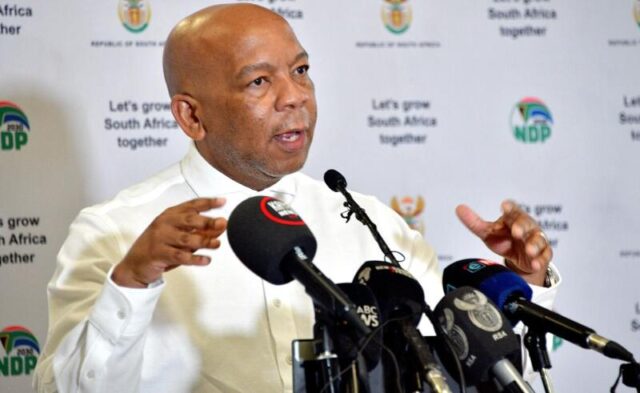Electricity Minister Kgosientsho Ramokgopa also announced the return of Kusile Unit 3 ahead of schedule, which he said marked a significant milestone in their efforts to resolve load shedding.
THE SEARCH for a new chief executive officer (CEO) of South Africa’s power utility Eskom is still ongoing after its former CEO Andre de Ruyter left the utility earlier this year.
The question on how far along the process of appointing a new CEO is, was posed during a media briefing by Electricity Minister Dr Kgosientsho Ramokgopa on Sunday.
While Ramokgopa advised that Minister of Public Enterprises, Pravin Gordhan, would be able to provide more detail on the CEO appointment, a government communications officer told journalists that only one out of 147 candidates in the global search was recommended, but was later rejected by government (the Shareholder).
According to the communication to journalists, despite reviewing the “high calibre” of approximately 147 candidates for the top job, the selection outcome did not yield a clear cut set of candidates.
The Board deliberated on the Shareholder Directive at its sitting early September and agreed to revise its recommendations.
“When the Board submitted the initial submission, upon conclusion of the selection process, it was fully cognisant of the provisions of Section 14.3.2 of the MOI [memorandum of incorporation] which requires that the submission clearly profile three appointable candidates.
“The Board emerged with a single appointable candidate. The recommendation was subsequently turned back by the Shareholder who did not concur with the recommendation as it was deemed to not fully meet the requirements of clause 14.3.2. of the MOI,” the communication read.
Ramokgopa said the Board’s Governance and Strategy Committee were working on finding a CEO to run Eskom and an announcement would be made by Eskom once that process is concluded.
Addressing the media on the state of the country’s energy capacity, Ramokgopa was positive that the power utility was beginning to turn the corner.
Kusile Unit 3 returned to service two months ahead of schedule, the minister announced, saying this would improve the available generation capacity by 800 megawatts once loaded to full capacity.
He said this marked a significant milestone in their efforts to the resolve load shedding.
Three of Kusile’s units remained offline since October 2022. Ramokgopa said this was as result of failures to control the desulphurisation unit.
Ramokgopa said that a root-cause analysis had to be done as there was a huge amount of slurry deposited on the walls of the chimney that is used to release the emissions into the atmosphere. The amount of slurry posed a threat to the structural integrity of the chimney, he said.
But, the return of Kusile 3 ahead of schedule was a significant milestone and would change the complexion of the game, he said.
“Essentially the grid was losing 2,400 megawatts of generating capacity without Kusile, which contributed to a significant amount of strain on the grid. This was particular more acute in the winter period.
“But, we are confident about the performance of this generating unit [Kusile] and including the work we are doing at the other units,” he said.








